This is a Guest Post by: Colibri Trader @priceinaction. This article is used here with permission and originally appeared here on ColibriTrader.com.
Oil tycoons shaped the way business is done. And, they still do. From the famous Rockefeller and his Standard Oil company to the current, modern oil conglomerates – the world’s balance of power changes because of oil.
Wars have been fought because of it. And, probably for many years to come, oil will still drive the political fights among different states and continents.
Oil gave Middle East countries the power to negotiate. As such, it helped in developing that part of the world.
USDCAD and Oil Price
What makes oil so special? Many say that with the rise of electric cars, oil will lose most of its influence. That’s totally wrong.
Few know that other industries oil dependent will boom and continue to expand in the decades ahead. Maritime transportation, the aviation industry – are just a couple of examples.
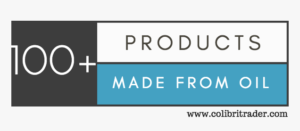 To this day, over a hundred products can be manufactured from an oil barrel. Keep this number in mind from now on whenever you think of oil’s importance.
To this day, over a hundred products can be manufactured from an oil barrel. Keep this number in mind from now on whenever you think of oil’s importance.
Technological advances made oil extraction cheaper and faster. In time, new inventions and discoveries made oil-derived components useful (e.g. petrochemical industry boom is only starting).
That’s especially true in Canada. You see, the Canadian economy is an energy driven one. As such, the oil industry plays an important role in the Canadian GDP (Gross Domestic Product).
We all know that the GDP tells the state of an economy: it shows the total value of goods and services an economy produces. Hence, the central bank, Bank of Canada in this case, closely watches the changes and adjusts the monetary policy.
Because of the oil industry employing many Canadian people, the way oil prices fluctuate have a strong influence on the Canadian’s economy. Hence, on the Canadian currency.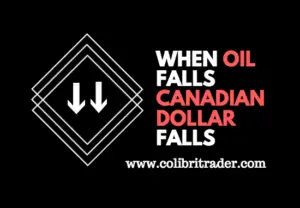
Important: A direct relationship exists between oil prices and the Canadian dollar.
No matter your technical analysis or geopolitical/fundamental one, when the oil falls, Canadian dollar falls. And the other way around.
This direct relationship holds true for quite some time now, and will still be true for the years to come. However, this brings a lot of opportunities to the trading table.
U.S. Oil Inventories
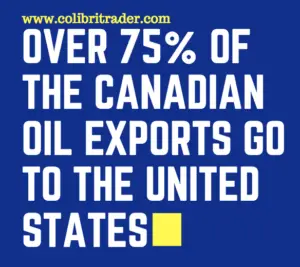 Based on the above, what moves oil prices, moves the Canadian dollar, or the “loonie”, as it is also called. When it comes to the Forex market, the USDCAD is the most important Canadian dollar pair as it has the world’s reserve currency in its componence.
Based on the above, what moves oil prices, moves the Canadian dollar, or the “loonie”, as it is also called. When it comes to the Forex market, the USDCAD is the most important Canadian dollar pair as it has the world’s reserve currency in its componence.
Moreover, a staggering detail makes USDCAD and oil price correlation even more important: over 75% of the Canadian oil exports go to the United States.
In a way, this is a normal thing. The two countries share a border.
On the other hand, it shows a strong dependency Canada has on the U.S. economy.
Rule of Thumb: when an economy expands, oil demand rises. When it contracts, oil demand falls. Hence, the Canadian economy moves in the same direction as the one in the United States of America.
Because of that, U.S. oil data plays an important role in the way the Canadian dollar moves. And, of course, on the way, USDCAD fluctuates.
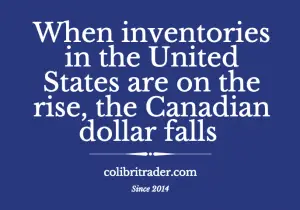
As such, U.S. oil inventories give a pretty solid indication of the demand for future Canadian oil. Therefore, it moves the Canadian dollar.
When inventories in the United States are on the rise, the Canadian dollar falls as the oil price falls. On the other hand, when inventories fall, the oil price rises in anticipation of stronger demand to come. Therefore, the USDCAD will take a tumble.
The two charts below don’t need much explanation. When the oil price fell to $30, the USDCAD rose to above 1.46.
The moment oil stabilized and recovered, the USDCAD reversed the trend. That’s how strong the oil and Canadian dollar relationship is.
OPEC Meetings
Like any commodity, the price of oil is strongly influenced by the supply and demand imbalances. As oil importance in the world’s economy grew, oil producing countries noticed that.
The next step was a logical one. The most important oil producers united under OPEC (Organization of Petroleum Exporting Countries).
The idea was, and still is, to control supply and demand. Hence, to control the oil price.
Remember? Oil is power.
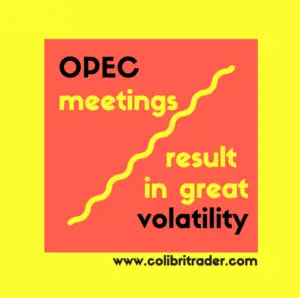 To this day, OPEC meetings in Vienna, Austria, resulting in great volatility on the oil market. And, because of the direct Canadian dollar correlation, the volatility spills over in the Forex market too.
To this day, OPEC meetings in Vienna, Austria, resulting in great volatility on the oil market. And, because of the direct Canadian dollar correlation, the volatility spills over in the Forex market too.
Important: Any Forex trader that buys or sells the USDCAD pair, must mark the OPEC meetings in their calendar. That is what drives the volatility in the pair. Maybe it is a good idea not trading around those times, since the outcomes are unpredictable.
However, OPEC’s influence dropped lately. Today, only about 35% of total oil’s production comes from OPEC members.
Recent shale oil revolution in the United States and fracking technologies made oil extraction possible in places no one thought before. Moreover, the oil extraction process became cheaper.
That’s a threat to OPEC’s power and influence. If the trend continues in the years to come, look for the Canadian-U.S. oil industries to matter more for the oil price than OPEC actions.
Conclusion
Trading is a game of probabilities. This is why every trade should have a minimum risk, and always a stop loss. Many factors, other than technical analysis ones, move the market.
Oil is one of these factors. The idea of this article was to highlight oil’s importance in the world. To show how it shaped the world in the last hundred years and how it will change it still in the years to come.
As such, look for the direct oil and Canadian dollar correlation to continue. From this moment on, whenever you want to buy or sell the USDCAD pair, look at the oil chart. It may help your trading decision. Or at least give you a hint…
p.s.
Have you checked my popular article on Candlestick Charts
for anything else trading related- please comment below or send me a direct request at: [email protected]
For more articles by Colibri Trader check him out here on ColibriTrader.com and follow him on twitter @Priceinaction.
